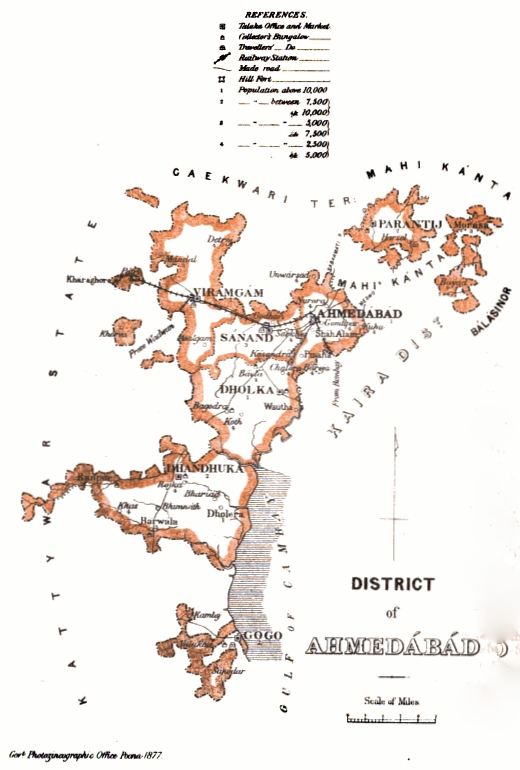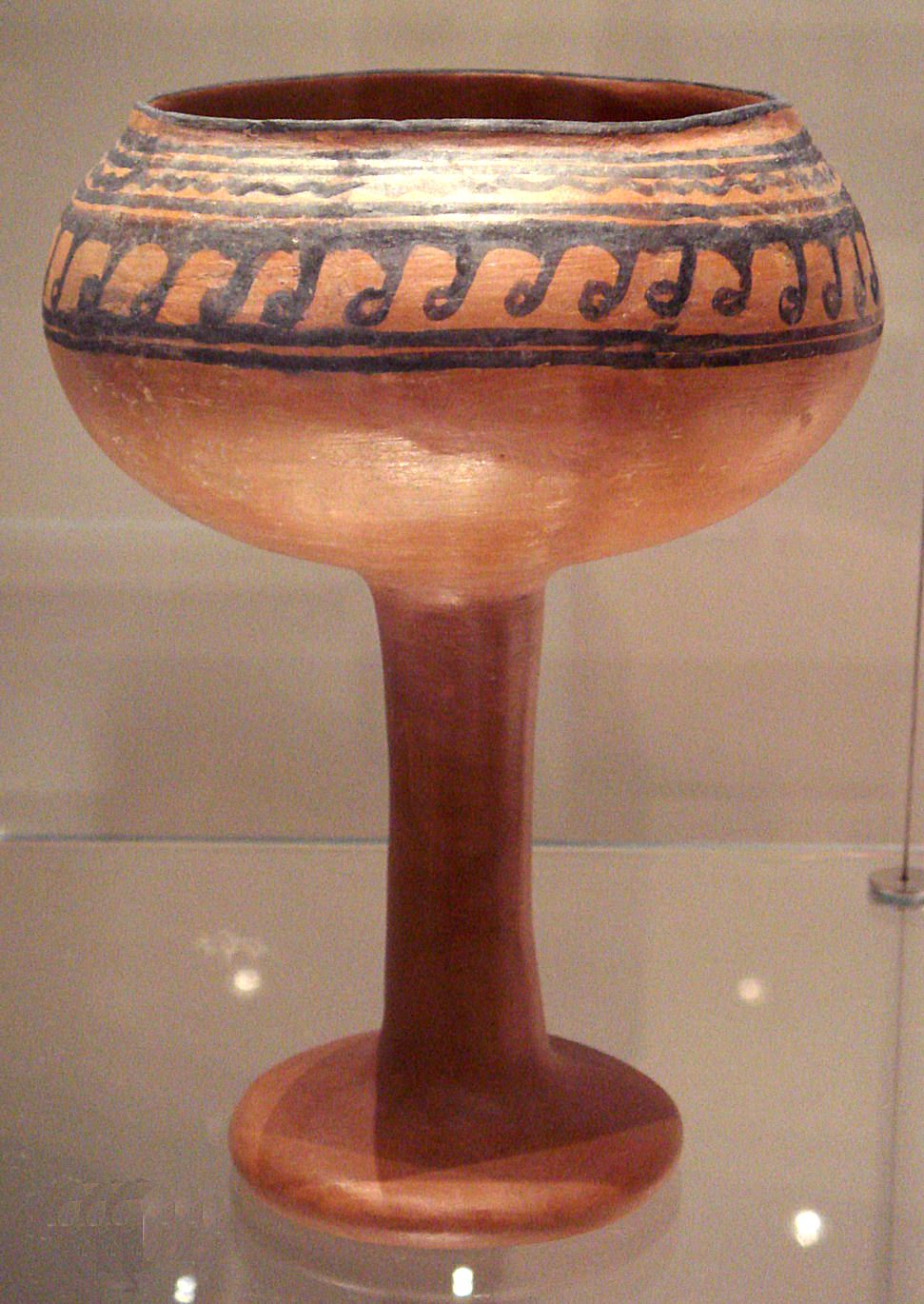|
Subhatavarman
Subhatavarman (reigned c. 1194–1209 CE), also known as Sohada, was an Indian king from the Paramara dynasty, who ruled in the Malwa region of central India. Early life Subhatavarman succeeded his father Vindhyavarman as the Paramara king. His father Vindhyavarman had re-established the Paramara sovereignty in Malwa, after a two-decade-long rule of the Chaulukyas of Gujarat. During the early part of his reign, the Chaulukya power had declined because of Muslim invasions. Taking advantage of this situation, Subhatavarman successfully invaded the Lata region (southern Gujarat). Invasion of Gujarat According to the 14th century writer Merutunga, Subhatavarman retreated from the Gujarat border after a minister of the Chaulukya king Bhima II recited a verse warning him of reprisals. But this is not supported by historical evidence. Historical evidence suggests that Subhatavarman invaded the Chaulukya kingdom around 1204 CE, and probably attacked their capital Anahilavada (o ... [...More Info...] [...Related Items...] OR: [Wikipedia] [Google] [Baidu] |
Bhima II
Bhima II (r. 1178–1240), also known as Bhola Bhima, was an Indian king who ruled the Kingdom of Gujarat. He was a member of the Chaulukya (also called Chalukya or Solanki) dynasty. During his reign, the dynasty's power declined greatly as a result of rebellions by the feudatories as well as external invasions by the Ghurids, the Paramaras, and the Yadavas of Devagiri. The kingdom, however, was saved by his generals Arnoraja, Lavanaprasada and Viradhavala, whose family established the Vaghela dynasty. Early life Bhima II, also known as Bhima-deva, was a son of the Chaulukya king Ajayapala. He succeeded his brother Mularaja II at a young age. Taking advantage of his young age, some of his ''mandalika''s (provincial governors) rebelled against him in order to establish independent states. His loyal feudatory Arnoraja came to his rescue, and died fighting the rebels. Arnoraja's descendants Lavanaprasada and Viradhavala became powerful during Bhima's reign, and ultimate ... [...More Info...] [...Related Items...] OR: [Wikipedia] [Google] [Baidu] |
Arjunavarman I
Arjunavarman (reigned c. 1210-1215 CE) was an Indian king from the Paramara dynasty, who ruled in the Malwa region of central India. Military career Arjuna succeeded his father Subhatavarman, and invaded the kingdom of the Chaulukyas of Gujarat. The 14th century writer Merutunga calls him the "destroyer of Gujarat". Arjuna defeated Jayanta-simha (or Jaya-simha), who had usurped the Solanki throne for a brief period. The 1211 CE Piplianagar grant of Arjuna refers to his victory over Jayanta, so Arjuna's Gujarat invasion must have happened before this time. An inscription from Bhopal indicates that he had reached Bharuch by 1213 CE. The Dhar ''prashasti'' inscription states that he defeated Jayasimha in the Parva mountain valley (possibly Pavagadh). It also states that Arjuna captured Jayanta's daughter Jayashri, and fell in love with her. According to Asoke Majumdar, this suggests that Jayanta made peace with the Paramaras through a marriage alliance. When the Yadava ru ... [...More Info...] [...Related Items...] OR: [Wikipedia] [Google] [Baidu] |
Arjunavarman
Arjunavarman (reigned c. 1210-1215 CE) was an Indian king from the Paramara dynasty, who ruled in the Malwa region of central India. Military career Arjuna succeeded his father Subhatavarman, and invaded the kingdom of the Chaulukyas of Gujarat. The 14th century writer Merutunga calls him the "destroyer of Gujarat". Arjuna defeated Jayanta-simha (or Jaya-simha), who had usurped the Solanki throne for a brief period. The 1211 CE Piplianagar grant of Arjuna refers to his victory over Jayanta, so Arjuna's Gujarat invasion must have happened before this time. An inscription from Bhopal indicates that he had reached Bharuch by 1213 CE. The Dhar ''prashasti'' inscription states that he defeated Jayasimha in the Parva mountain valley (possibly Pavagadh). It also states that Arjuna captured Jayanta's daughter Jayashri, and fell in love with her. According to Asoke Majumdar, this suggests that Jayanta made peace with the Paramaras through a marriage alliance. When the Yadava ruler S ... [...More Info...] [...Related Items...] OR: [Wikipedia] [Google] [Baidu] |
Chaulukya
The Chaulukya dynasty (), also Solanki dynasty, was a dynasty that ruled parts of what are now Gujarat and Rajasthan in north-western India, between and . Their capital was located at Anahilavada (modern Patan). At times, their rule extended to the Malwa region in present-day Madhya Pradesh. The family is also known as the "Solanki dynasty" in the vernacular literature. They belonged to the Solanki (clan), Solanki clan of Rajputs. Mularaja, the founder of the dynasty, supplanted the last ruler of the Chavda dynasty around 940 CE. His successors fought several battles with the neighbouring rulers such as the Chudasama dynasty, Chudasamas, the Paramara dynasty, Paramaras and the Chahamanas of Shakambhari. During the reign of Bhima I, Bhima I, the Ghaznavid ruler Mahmud of Ghazni, Mahmud invaded the kingdom and raided the Somnath temple during 1024–1025 CE. The Chaulukyas soon recovered, and the kingdom reached its zenith under the rule of Jayasimha Siddharaja and Kumarapa ... [...More Info...] [...Related Items...] OR: [Wikipedia] [Google] [Baidu] |
Vindhyavarman
Vindhyavarman (reigned c. 1175-1194 CE) was an Indian king from the Paramara dynasty, who ruled in the Malwa region of central India. He defeated the Chaulukyas, who had annexed the Paramara territory to their own kingdom in the preceding years, and reconquered Dhar after decades of Chaulukya occupation Military career The reign of Vindhyavarman's father Jayavarman I was followed by a 20-year interregnum. The Paramara kingdom was first usurped by one Ballala, and then came under the suzerainty of the Chaulukya dynasty (also known as the Chalukyas of Gujarat). According to an inscription of his grandson Arjunavarman I, Vindhyavarman vanquished the king of Gujarat. Vindhyavarman thus re-established the Paramara sovereignty in Malwa. According to historian R. C. Majumdar, Vindhyavarman accomplished this during the reign of the Chaulukya king Mularaja II (r. c. 1175 – c. 1178). However, A. K. Majumdar believes that Malwa remained under Chaululkya control during Mularaja' ... [...More Info...] [...Related Items...] OR: [Wikipedia] [Google] [Baidu] |
Paramara Dynasty
The Paramara Dynasty (IAST: Paramāra) was an Indian dynasty that ruled Malwa and surrounding areas in west-central India between 9th and 14th centuries. They belonged to the Parmar (clan), Paramara clan of the Rajputs. The dynasty was established in either the 9th or 10th century, and its early rulers most probably ruled as vassals of the Rashtrakutas of Manyakheta. The earliest extant Paramara inscriptions, issued by the 10th-century ruler Siyaka, have been found in Gujarat. Around 972 CE, Siyaka sacked the Rashtrakuta capital Manyakheta, and established the Paramaras as a sovereign power. By the time of his successor Vakpati Munja, Munja, the Malwa region in present-day Madhya Pradesh had become the core Paramara territory, with Dhara (city), Dhara (now Dhar) as their capital. At its zenith under Bhoja, it ruled over an empire which extended from Chittorgarh Fort, Chittor in the north to Konkan in the south, and from the Sabarmati River in the west to Vidisha in the east. Th ... [...More Info...] [...Related Items...] OR: [Wikipedia] [Google] [Baidu] |
Jaitugi
Jaitugi (r. c. 1191-1200), also known as Jaitrapala, was a ruler of the Seuna (Yadava) dynasty of the Deccan region in India. Early life Jaitugi was the son of his predecessor Bhillama V, who overthrew the Chalukya suzerainty to become independent. The last extant record from Bhillama's reign is dated August 1191, while the earliest extant record from Jaitugi's reign is dated December 1192. The Bijapur inscription, dated 25 December 1196, states that it was issued during the sixth year of Jaitugi's reign. This evidence suggest that Jaitugi ascended the throne in late 1191. Military career Victory over the Kakatiyas During the reign of his father Bhillama, Jaitugi participated in his father's wars against the Hoysala king Ballala II, resisting the enemy's attempts to capture Kalyani and Devagiri. Bhillama ultimately suffered a defeat against the Hoysalas. Taking advantage of weakened Yadava power, the Kakatiyas had invaded the eastern part of the Yadava kingdom. All th ... [...More Info...] [...Related Items...] OR: [Wikipedia] [Google] [Baidu] |
Dhara (city)
Dhar is a city located in Dhar district of the Malwa region in the state of Madhya Pradesh, India. The city is the administrative headquarters of the Dhar district. Before Indian independence from Great Britain, it was the capital of the Dhar princely state. Location Dhar is situated between 21°57' to 23°15' N and 74°37' to 75°37' E. The city is bordered in the north by Ratlam, to the east by parts of Indore, in the south by Barwani, and to the west by Jhabua and Alirajpur. The town is located west of Mhow. It is located above sea level. It possesses, alongside its old ramparts, many buildings which contain records of cultural, historical and national importance. Historic places and monuments The most visible parts of ancient Dhar are the massive earthen ramparts, which are best preserved on the western and southern sides of the town. These were most likely built at beginning of the 9th century. Wall remains show that the city was circular in plan and surrounded ... [...More Info...] [...Related Items...] OR: [Wikipedia] [Google] [Baidu] |
Dholka
Dholka is a city and municipality in the Ahmedabad District of the Indian state of Gujarat. It is the headquarters of Dholka Taluka, and is 48 km by road via National Highway 8A southwest of the city of Ahmedabad. Dholka has an average elevation of . Dholka's Nearest City is Ahmedabad and Kheda. History Large numbers of old buildings in the city suggest that it was important in ancient times; archaeologists have discovered small stone chert tools made of chalcedony, quartz and agate which date to the Middle Stone and Iron Ages. Dholka is said to stand on the site of Viratpur, or Matsyanagar, which, in their wanderings, the Pandavas found governed by queen Sudishva of the Kaiyo or Bhil race. Her brother, Kichak Kaiyo, a prince of great power, was, according to the story, slain for an attempt on the chastity of Draupadi. Here too in 144 AD, Kanaksen, a prince of the race of the sun, ''Suryavansh'', is said to have settled. At the close of the eleventh century, the ... [...More Info...] [...Related Items...] OR: [Wikipedia] [Google] [Baidu] |
Someshvara (13th-century Poet)
Someshvara (IAST: Someśvara) was a 13th-century hereditary priest and Sanskrit poet in the Chaulukya and Vaghela courts of present-day Gujarat, India. He was a close friend of the minister Vastupala, and there are several legendary ''prabandha'' anecdotes about the two men. Early life Someshvara, also known as Someshvara-deva, lived in the 13th century, but the exact year of his birth is not known. The last canto of his ''Surathotsava Mahakavya'' provides information about him and several of his ancestors. Someshvara came from a Brahmin family of Vasishtha gotra and Gulecha ''kula''. His ancestors lived at the town of Nagara (present-day Vadnagar). King Mularaja, the founder of the Chaulukya dynasty, appointed his ancestor Sola-sharman as a priest (''purohita''). Sola-sharman's descendants also served the Chaulukya kings as priests: Lalla-sharman (king Chamunda-raja), Munja (king Durlabha-raja), Soma, Ama-sharman (king Karna), Kumara (king Jayasimha Siddharaja), Sarva-deva, A ... [...More Info...] [...Related Items...] OR: [Wikipedia] [Google] [Baidu] |
Malwa
Malwa () is a historical region, historical list of regions in India, region of west-central India occupying a plateau of volcanic origin. Geologically, the Malwa Plateau generally refers to the volcanic plateau, volcanic upland north of the Vindhya Range. Politically and administratively, it is also synonymous with the former state of Madhya Bharat which was later merged with Madhya Pradesh. At present the historical Malwa region includes districts of western Madhya Pradesh and parts of south-eastern Rajasthan. Sometimes the definition of Malwa is extended to include the Nimar region south of the Vindhya Range, Vindhyas. The Malwa region had been a separate political unit from the time of the ancient Malava Kingdom. It has been ruled by several kingdoms and dynasties, including the Avanti (India), Avanti Kingdom, The Maurya Empire, Mauryans, the Malavas, the Gupta Empire, Guptas, the Paramara dynasty, Paramaras, The Rajput, Rajputs, the Delhi Sultanate, the Malwa Sultanate, M ... [...More Info...] [...Related Items...] OR: [Wikipedia] [Google] [Baidu] |


